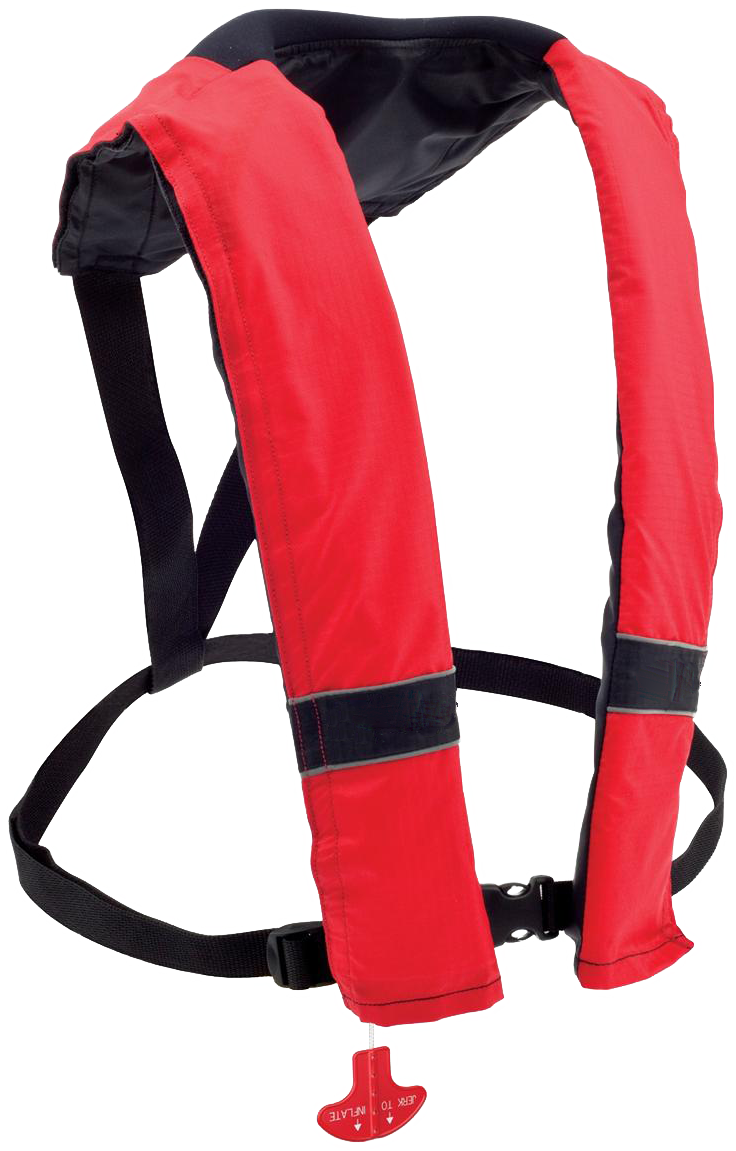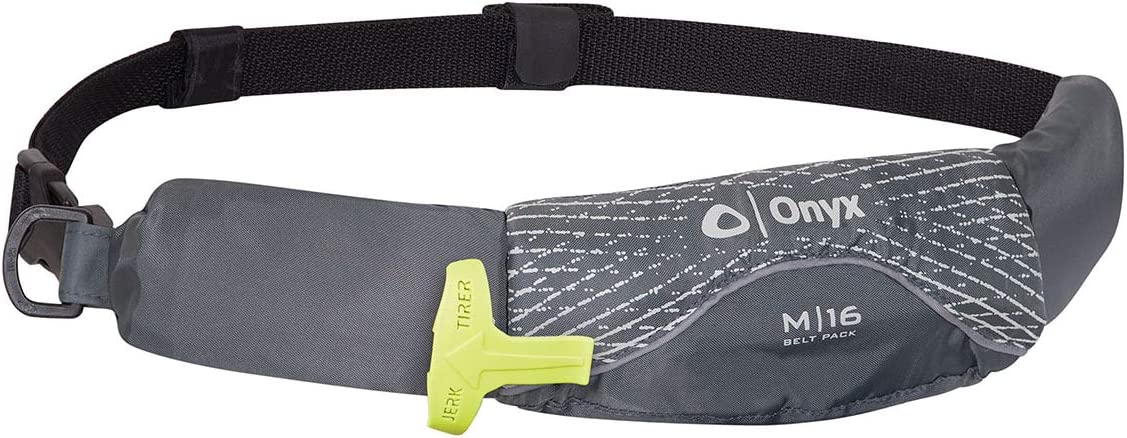Inflatable life jackets use compressed air cartridges (CO2) when deployed. The gas fills the life jacket chamber. Inflatables provide 45% more buoyancy when inflated. This causes a person to float higher and be more visible when the life jacket inflates. Always read the life jacket label and owner's manual for approved use, maintenance care, instructions, and manufacturer contact information.
Inflatable life jackets are NOT APPROVED by the U.S. Coast Guard for users under 16 years old. Currently, there are no child-sized inflatable or hybrid-style life jackets approved by the U.S. Coast Guard. For less mature youth who are 16 and over, non-swimmers, and less mobile adults, inflatable life jackets are not recommended. Inherently buoyant (foam-style life jackets) are the best choice.
Inflatable life jackets need routine maintenance and regular testing. Please read the label and follow the instructions for maintenance and testing. If you have an inflatable life jacket, test the inflation mechanism every year. Also, test the manual inflation to know if the bladder holds air. Test it. Deploy your inflatable life jacket in a pool to understand how it fits, feels, and inflates. Try swimming in it. Make sure the harness isn't too tight. Get comfortable blowing air into and releasing air, using the inflation tube. Know how to fine-tune adjustments for comfort. Inflatable jackets do fail to deploy or show tampering with the inflation mechanism. Remember Regular maintenance!
IMPORTANT: Not all inflatable life jackets come with a CO2 cartridge. Make sure you arm your inflatable with the correct manufacturer's CO2 cylinder. Check out the
US Army Corps of Engineers video to learn more about inflatables.
There are two primary types:
- Manual inflation - inflates with the quick jerk of a cord
- Automatic - inflates when submerged in water.
Both types are also inflated by breathing into an inflation tube/mouthpiece. This is a backup method to inflate the life jacket in case the inflation mechanism fails. Use the inflation tube to adjust the comfort of the jacket after its inflated. The inflation tube is also how to DEFLATE the life jacket to repack it.
Buy re-arming kits through the life jacket manufacturer or at outdoor retail stores. Replace cylinders when expired and if you have inflated the life jacket. If you have an expired cartridge, you can use it to test your life jacket for fit and function!
Automatic Inflatables:An automatic inflatable will go off when the life jacket is, at least, four inches under the water. It's triggered by a small tablet that dissolves or a pressure gauge that starts the inflation. There is also a manual "jerk to inflate" cord.
Hybrid Inflatables:Intended for certain boating activities. Hybrids have 7.5 lbs. of inherent buoyancy when deflated and inflates up to 22 lbs. Wearing a traditional life jacket, you will also have extra buoyancy when inflated.

